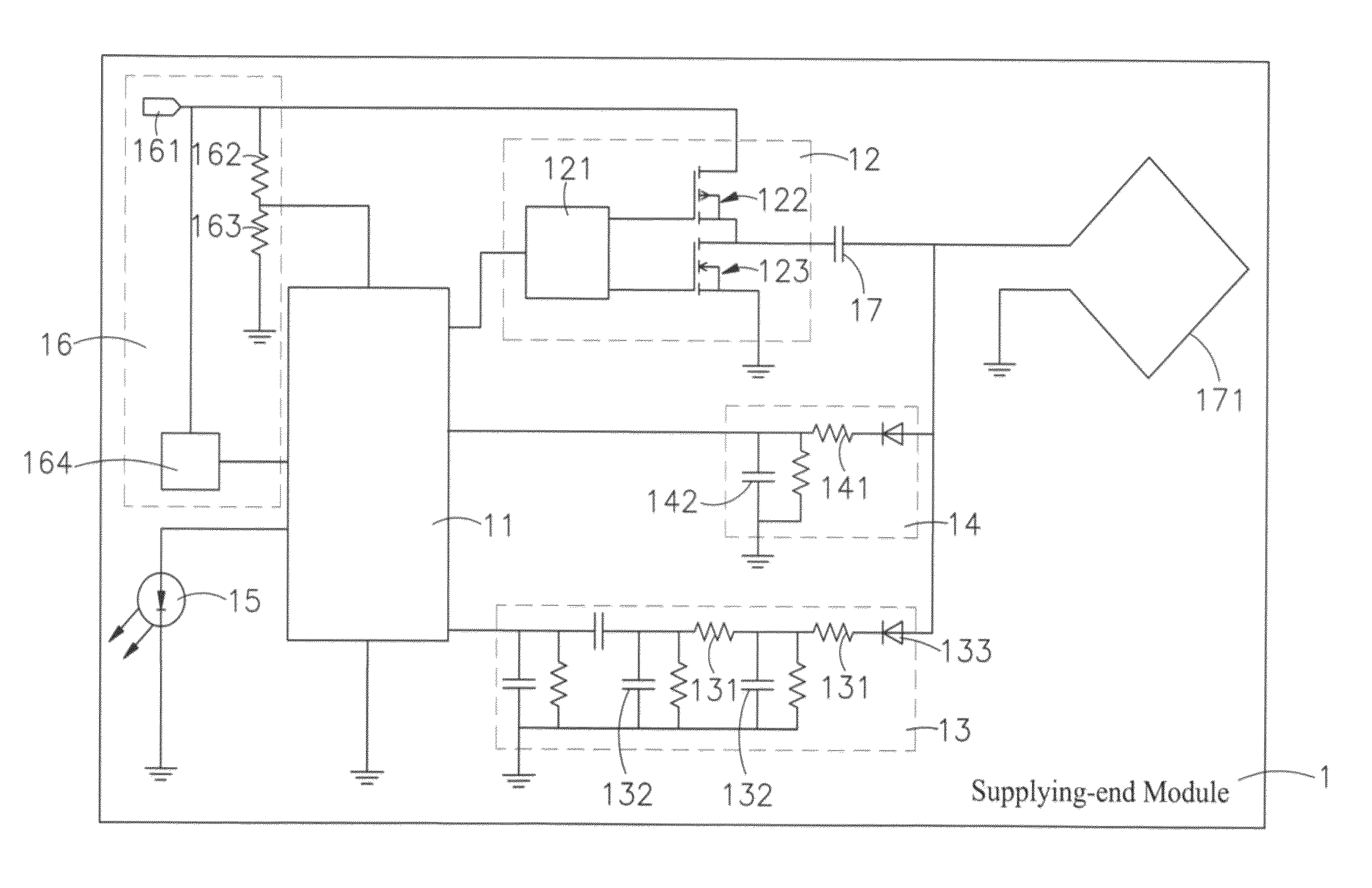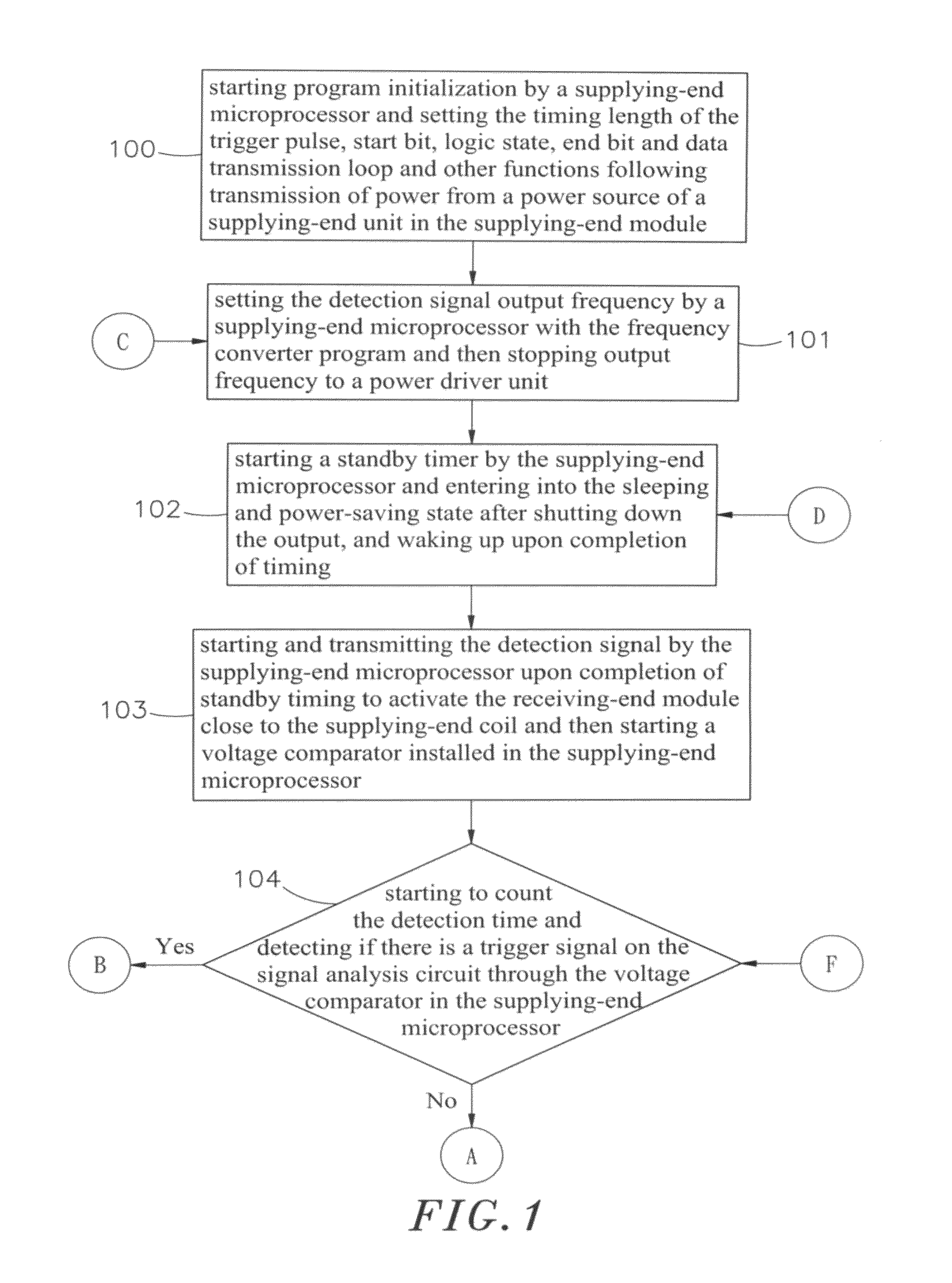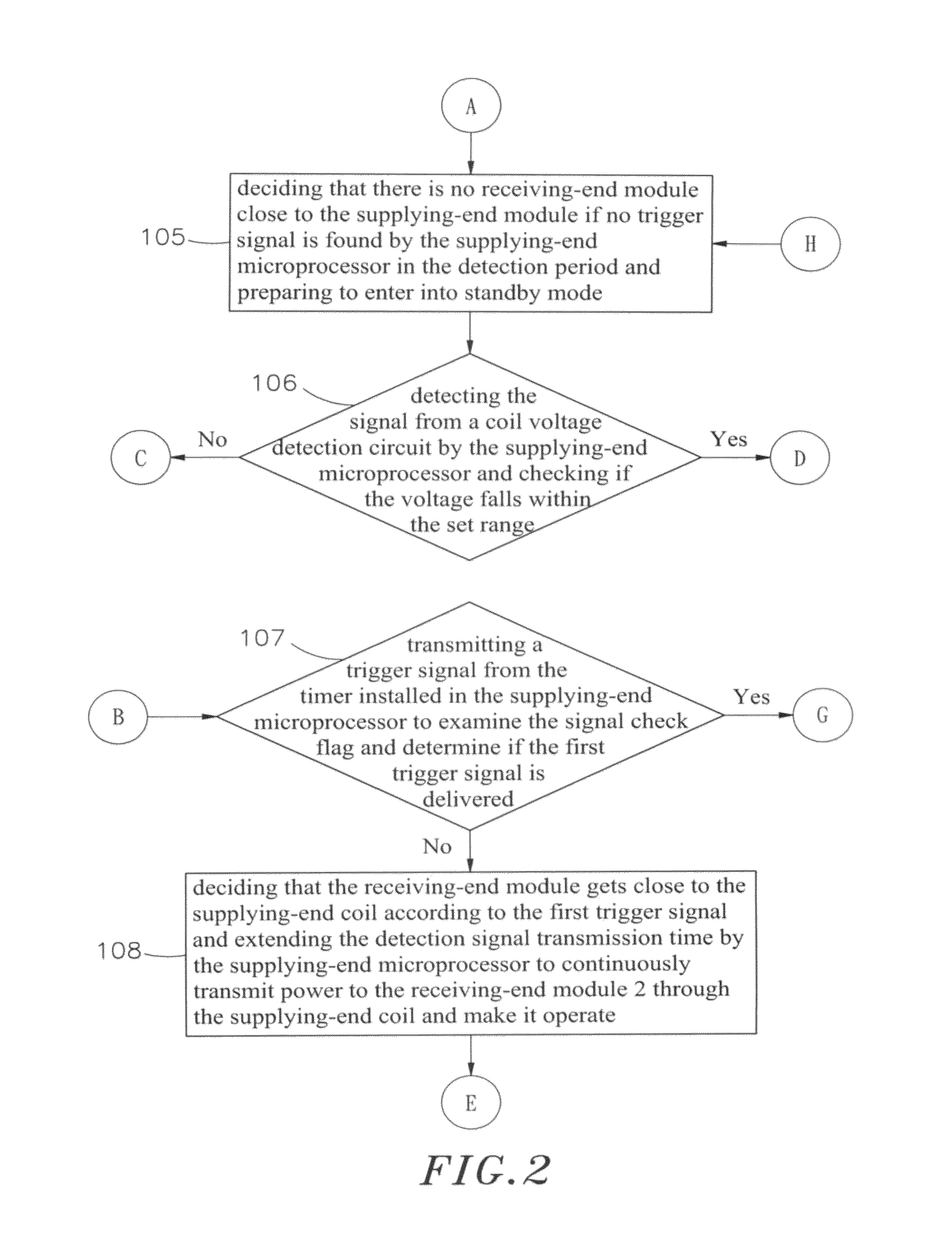Method of time-synchronized data transmission in induction type power supply system
a technology of induction type and power supply system, which is applied in the direction of digital transmission, transmission monitoring, line-transmission details, etc., can solve the problems of inability to charge and data transmission synchronously and must be carried out separately, damage or failure of objects being charged, and power load noise interference, so as to eliminate the signal noise of electric power and prevent interference of power load noise
- Summary
- Abstract
- Description
- Claims
- Application Information
AI Technical Summary
Benefits of technology
Problems solved by technology
Method used
Image
Examples
Embodiment Construction
[0061]To achieve the aforesaid objects and functions as well as the techniques adopted in the present invention and its fabrication, examples of the preferred embodiment of the present invention are given below to illustrate its features and functions in detail by referring to the accompanying drawings.
[0062]Referring to FIGS. 1, 2, 14, 15, 19, 20, 21, 22, 23, 24, 25 and 26, an induction type power supply system disclosed in the present invention includes a supplying-end module 1 and a receiving-end module 2. A method of transmitting power and data signals from said modules to a preset electronic device comprises the steps of:
[0063](100) starting program initialization by a supplying-end microprocessor and setting the timing length of the trigger pulse, start bit, logic state, end bit and data transmission loop and other functions following supply of power from a power source 161 of a power supply unit 16 in the supplying-end module 1.
[0064](101) setting the detection signal output ...
PUM
 Login to View More
Login to View More Abstract
Description
Claims
Application Information
 Login to View More
Login to View More - R&D
- Intellectual Property
- Life Sciences
- Materials
- Tech Scout
- Unparalleled Data Quality
- Higher Quality Content
- 60% Fewer Hallucinations
Browse by: Latest US Patents, China's latest patents, Technical Efficacy Thesaurus, Application Domain, Technology Topic, Popular Technical Reports.
© 2025 PatSnap. All rights reserved.Legal|Privacy policy|Modern Slavery Act Transparency Statement|Sitemap|About US| Contact US: help@patsnap.com



